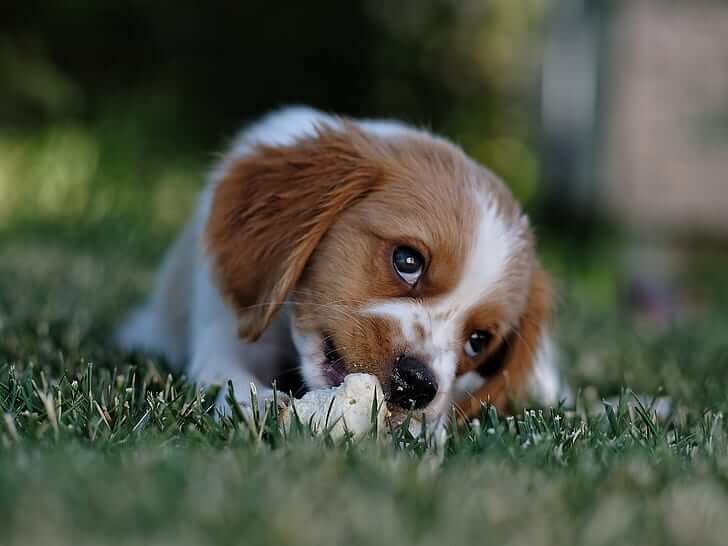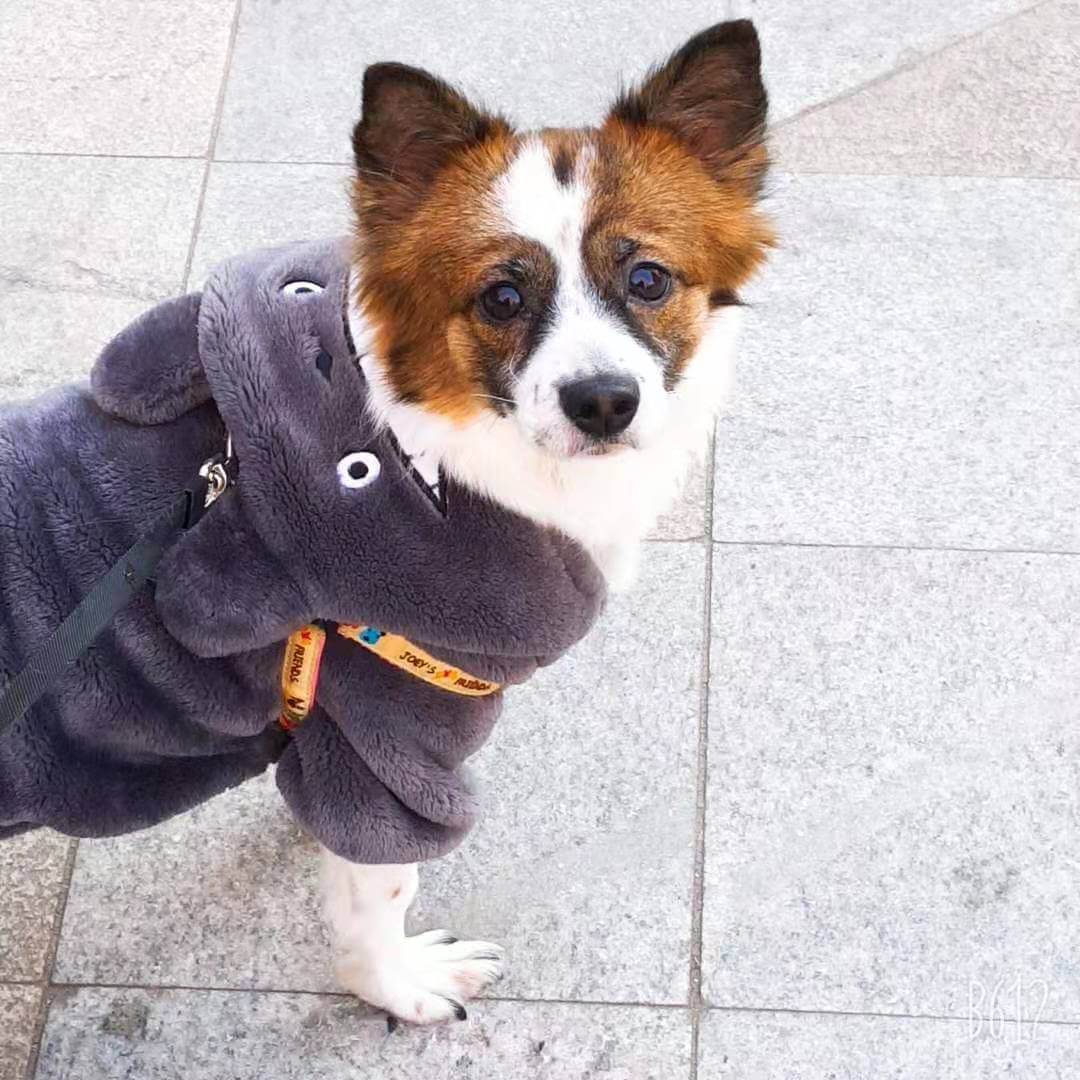How Long Does a Bag of Dog Food Last
Recognizing how long a bag of dog food lasts is crucial for maintaining your pet’s health and minimizing waste. The length of time can vary depending on factors like the type of Food, storage conditions, and your pet’s size. Proper management ensures that your dog always receives fresh, safe Food essential for its overall well-being.
Understanding how long does a bag of dog food last is important because stale or expired Food can lose its nutritional value and even become harmful. By knowing the shelf life of dog food and implementing correct storage practices, you can ensure your dog gets high-quality, nutritious meals. Proper storage methods, such as keeping the Food in sealed containers and a cool, dry location, can greatly increase the shelf life and preserve the Food’s freshness.
This blog provides detailed information on how long does a bag of dog food last and offers practical tips for managing it effectively. We will investigate the elements that affect the longevity of dog food, proper storage techniques, and how to make the most of your pet’s food supply while avoiding waste.
Factors Influencing the Shelf Life of Dog Food: How Long Does a Bag of Dog Food Last

Type of dog food (dry vs. wet)
Dry dog food typically lasts longer than wet Food. Kibble has a lower moisture content, which helps it stay fresh for longer. On the other hand, wet dog food has a shorter shelf life and is higher in moisture. Wet Food should be used within a few days of opening and stored properly to prevent spoilage.
Storage conditions (temperature, humidity, light exposure)
Maintaining ideal storage conditions is essential for increasing the life of dog food. Temperature: Keep dog food in a cool, dry place. Maintaining ideal storage conditions is essential for increasing the speed of storage. Humidity: A surplus of moisture can cause mould growth and spoilage. Light exposure: Store dog food away from bright light, as this can deteriorate the Food’s quality. Using airtight containers can help protect the Food from these factors.
Packaging (sealed vs. opened)
Sealed packaging helps preserve freshness longer. Unopened dog food typically lasts longer because it is protected from air, moisture, and contaminants. Once the package is opened, the Food is exposed to air and moisture, speeding up the deterioration process. Transfer opened Food into airtight containers to help maintain its freshness.
Ingredient quality and preservatives
Higher-quality ingredients and preservatives can impact the shelf life of dog food. Foods made with high-quality ingredients and natural preservatives generally last longer and maintain their nutritional value better. Low-quality ingredients and artificial preservatives may not preserve the Food as well and could affect its freshness over time.
Knowing these things will help you better manage your dog’s food supply and ensure that your pet always gets fresh and nutritious meals.
Understanding Expiration Dates and Best-By Dates

Explanation of expiration dates
Expiration dates on dog food packaging indicate the last date the Food is guaranteed safe to eat. The manufacturer sets this date to ensure that the Food remains safe and maintains its nutritional quality. Consuming dog food after the expiration date can put your pet’s health at risk, as the Food may become spoiled or contaminated.
Difference between expiration and best-by dates
Best-by dates and expiration dates serve different purposes. Best-by dates refer to the date the Food is expected to be of the best quality. It indicates the peak freshness and nutritional value of the Food. Expiration dates, on the other hand, are about safety. They indicate when the Food might no longer be safe to consume. Food can still be safe to eat shortly after the best-by date, but it may not be of its best quality.
How to read and interpret these dates
To read and interpret these dates, check the packaging for expiration and best-by dates. The expiration date is typically more critical for safety, while the best-by date focuses on quality. Always adhere to the expiration date to avoid potential health risks. Try to use the Food before the best-by date for the best quality.
Tips for checking and understanding these dates on dog food labels
- Locate the Dates: Find the expiration and best-by dates on the dog food package, usually printed on the back or bottom.
- Check these dates regularly, especially if you have opened the Food or it’s nearing its date.
- Observe Storage Conditions: Ensure the Food is stored properly to help maintain its quality and safety up to these dates.
- Use the FIFO Method: Use the “first in, first out” method, using older Food before newer stock, to avoid keeping Food past its best-by or expiration date.
Understanding and monitoring these dates ensures your dogs receives fresh and safe Food, contributing to their overall health and well-being.
How to Keep Dog Food Freshest for the Longest

Ideal storage conditions for dry dog food
Dry dog food must be kept dry and cold, away from sunlight. A pantry or cupboard is usually a good choice. Keep it out of moist or humid environments where moisture might cause Food to deteriorate or develop mould. Keep the bag tightly sealed. Alternatively, put the meal in an airtight container to keep it safe from air, which can make it go stale faster.
Best practices for storing wet dog food
Wet dog food should be refrigerated after opening and used within the time frame specified on the packaging, usually 3-5 days. To ensure freshness and avoid infection, store the Food in its original can or transfer it to an airtight container; always keep an eye out for any indications of spoiling, including an odd scent or mould, before feeding it to your dog.
Tips for maintaining freshness after opening
- Use airtight containers: Transfer dry or wet dog food to airtight containers to keep out moisture and air. This helps preserve the Food’s freshness and nutritional value.
- Seal properly: Make sure the container is securely closed after each use, and if you are not using a container for dry Food, make sure the bag is closed properly.
- Check regularly: Regularly inspect stored Food for any signs of spoilage or changes in texture and smell.
Using these storage suggestions, you can ensure your Husky’s Food stays fresh and nourishing, enhancing its general health and welfare.
Signs That Dog Food Has Gone Bad
Changes in smell, colour, and texture
Changes in smell, colour, and texture indicate that dog food may no longer be fresh. Smell: Spoiled dog food often develops a rancid or sour odour. Colour: Look for any unusual discolouration. Fresh Food should have a consistent colour, while spoiled Food may appear darker or have strange spots. Texture: If the Food feels excessively dry, greasy, or has an unusual texture, it may be past its prime.
Presence of mould or pests
Mold or pests are signs of contamination. Mould: Check for any fuzzy, discoloured patches on the Food. Mold growth indicates that the Food is spoiled and should be discarded immediately. Pests: Look for insects or larvae, especially if the Food has been stored improperly. If you find pests, it’s best to throw away the contaminated Food and clean the storage area thoroughly.
Impact on your dog’s health (e.g., digestive issues)
Spoiled dog food can impact your dog’s health and cause digestive problems like vomiting, diarrhoea, or stomach cramps. Should your dog display any peculiar signs following eating, it might be due to spoiled Food. Keep an eye on your dog’s health and, if necessary, consult your veterinarian if you suspect the Food might be the cause of any health problems.
Potential health effects from spoiled dog food
Unclean dog food can seriously endanger a person’s health and that of your pet. In addition to digestive issues, it can lead to more severe conditions like food poisoning or infections. Take care at all times, and do not give your dog food that shows any spoilage. Regularly inspect your dog’s Food to ensure it is safe and fresh.
By being aware of these signs, you can prevent feeding your Husky spoiled food and help maintain their health and well-being.
What is the Shelf Life of a Bag of Dry Dog Food?

Average shelf life of unopened dry dog food
Unopened dry dog food typically has a shelf life of 6 months to a year. This time frame may differ based on the manufacturer and how the Food is stored. Most manufacturers print a “best-by” date on the bag, which helps you know when the Food is expected to remain fresh. The bag should always be kept in a dry, cold area to maximize its shelf life.
Shelf life of opened dry dog food
Opened dry dog food generally lasts 4 to 6 weeks. Once you open the bag, the Food is exposed to air, which can cause it to become stale more quickly. To keep it fresh, transfer the Food in an airtight container and keep it somewhere dry and cold. Keeping the bag tightly sealed or using a container helps maintain its quality for as long as possible.
Factors affecting the longevity of dry dog food
Storage conditions and packaging integrity are crucial for the longevity of dry dog food. Keep the Food somewhere dry and cool away from moisture and sunlight. High humidity and temperatures can make Food go bad faster. Packaging integrity: Keep the packaging sealed tightly to prevent air and moisture from getting in. Proper storage helps ensure the Food remains fresh and nutritious for your dog.
Knowing these things will help you to properly manage your dry dog food supply and ensure your Husky receives the best nutrition.
How Long Does a Bag of Wet Dog Food Last?

Average shelf life of unopened wet dog food
Unopened wet dog food usually lasts 1 to 2 years from manufacturing. This period may differ based on the brand and specific product. Check the “best-by” date on the can or pouch for the most accurate information. Store unopened wet dog food in the cold; keep it dry and away from the sun and heat sources to help maintain its quality until you are ready to use it.
Shelf life of opened wet dog food
Wet dog food should be used within 3 to 5 days if refrigerated or opened. Once you open the can or pouch, the Food exposed to air may spoil more quickly. Always transfer any leftover wet food. Place it in a refrigerator-safe container that is sealed tightly. Use the Food within the specified time frame to guarantee it stays safe and fresh for your dog.
Factors affecting the longevity of wet dog food
Exposure to air and temperature fluctuations are key factors affecting the longevity of wet dog food. Once opened, the Food is vulnerable to air, Which may result in deterioration and loss of freshness. Temperature fluctuations: Keep the Food refrigerated consistently; sudden temperature changes can affect quality. Proper storage helps maintain the Food’s safety and nutritional value.
By adhering to these recommendations, you may efficiently handle your wet dog food supply and ensure your Husky gets fresh, nutritious meals.
Tips for Managing Dog Food Supply
How to calculate how long a bag of dog food will last based on feeding guidelines
To estimate how long a bag of dog food will last, use the feeding guidelines provided on the bag and consider your dog’s daily portion size. Feeding charts typically offer recommendations based on your dog’s weight and activity level.
Compare these guidelines with the total amount of Food in the bag to calculate how long it will last. For example, if a bag contains 30 pounds of Food and your dog eats 2 cups per day, you can use this information to estimate the bag’s duration.
Tips for buying in bulk and avoiding waste
When buying dog food in bulk, consider your storage space and your dog’s consumption rate. Storage space: Ensure you have adequate space to keep a lot of Food in a dry, cool place. Consumption rate: Buy amounts that match your dog’s eating habits to avoid keeping Food for too long. If you purchase in bulk, consider the shelf life and use proper storage methods to prevent waste.
Managing and rotating dog food stock
To manage and rotate your dog food stock, keep track of purchase dates and use the older stock first. Mark bags or containers with the date of purchase to ensure you use them before they expire. This procedure aids in preserving the Food’s freshness and reduces the risk of spoilage. Organize your storage area to make accessing older Food easier before accessing newer supplies.
Using these suggestions, you can effectively manage your dog food supply, minimize waste, and ensure your Husky always gets fresh, high-quality meals.
When to Dispose of Old Dog Food
Guidelines for safely discarding expired or spoiled dog food
Dispose of expired or spoiled dog food safely to prevent harm to your dog and avoid contamination. If the Food is past its expiration date or shows signs of spoilage, such as mould or an off smell, it’s best to throw it away. Place the old Food in a sealed bag or container before discarding it to keep it contained and prevent any potential mess or odour.
Dispose of by local regulations.
Follow local regulations for disposing of dog food. Some areas have specific rules for disposing of pet food, including where to place it and any special instructions. Consult your neighbourhood’s garbage management facility or municipal guidelines to follow the correct procedures. Proper disposal helps keep your community clean and safe.
Environmental considerations for disposal
Consider environmental impacts when disposing of dog food. Avoid throwing Food directly into open trash bins, which can attract pests. Instead, use a sealed container and follow local guidelines. Some areas offer composting programs for certain types of organic waste, but check if pet food can be included.
Tips for minimizing environmental impact
- Choose eco-friendly packaging: Choose recyclable or biodegradable packaging brands when buying dog food.
- Donate unopened Food: If it is still within its expiration date and in good condition, Consider giving it to nearby animal rescues or shelters. Groups.
- Proper storage: Prevent spoilage and waste by storing Food correctly and using it before it expires.
Following these recommendations, you may properly dispose of old dog food and reduce its environmental impact.
Conclusion
Recap of key points
In this blog, we’ve explored various aspects of managing your dog food supply, including how long different types of dog food last, factors affecting their shelf life, and best practices for storage. We discussed how unopened dry dog food typically lasts six months to a year, while wet dog food usually lasts 1 to 2 years unopened but should be used within 3 to 5 days once opened. We also covered how proper storage conditions—such as using airtight containers and storing Food in a cool, dry place—can significantly impact the longevity and freshness of dog food.
Emphasize the importance of proper storage and monitoring
Proper storage and regular monitoring are crucial for ensuring your dog food remains fresh and safe for your pet. Correct storage helps prevent spoilage and maintains the nutritional quality of the Food. Keeping an eye on expiration dates and food conditions helps avoid feeding your dog spoiled or stale Food, which can affect their health.
Encouragement to keep track of dog food usage and freshness
Keeping track of your dog’s food usage and freshness is essential for maintaining a healthy diet for your pet. Regularly check and manage your dog food supply to ensure you use it within the recommended time frames. This practice helps manage food waste and ensures your dog receives fresh and nutritious meals.
By adhering to these recommendations, you can efficiently manage your dog food supply, ensuring your Husky enjoys healthy and fresh meals. Regular monitoring and proper storage will contribute to your pet’s overall well-being and help avoid potential health issues related to spoiled Food.
YOU MAY ALSO LIKE:
How Much Does Sundays Dog Food Cost
How to choose the best dog food for Huskies
How Much Does Cup of Dog Food Weigh
How to Treat Dog Food Poisoning at Home
How Much is Sunday’s Dog Food?
How Much is Ollie Dog Food in a Month?
How to Choose Dog Food
How Much Pumpkin to Add to Dog Food
How Much Does Farmers Dog Food Cost?
How Long Can Wet Dog Food Sit Out?
How to Soften Dog Food
How to Keep Dogs Out of Cat Food
How to Give Dog Pills Without Food
How to Get my Dog to Eat Dry Food
How to Keep Ants Out of Dog Food
How Much Does Dog Food Cost
How Long to Soak Dog Food
How Much Homemade Dog Food to Feed
How Much Wet Food to Feed a Dog
How to Transition Dog Food
How to Stop Food Aggression in Dogs Towards Other Dogs
How many cups of food should I feed my dog?
How to Stop Food Aggression in Dogs
How Many Cups in a Pound of Dog Food
How Long Does it Take a Dog to Digest Food
Why is My Dog Always Hungry
How Much Protein is in Dog Food?
How to Make Dog Food
how long to feed dog puppy food
What is The Cost to Make Homemade Dog Food?
How to Make Homemade Raw Dog Food
How to Make Homemade Dry Dog Food
How to Prepare Dog Food at Home for Senior Dogs
How to Train a Dog That is Not Food-Motivated
How Much Food Should I Feed
How To Store Dog Food
How Much Time Can a Dog Survive Without Consuming Water
How Long Can a Dog Survive Without Food?

